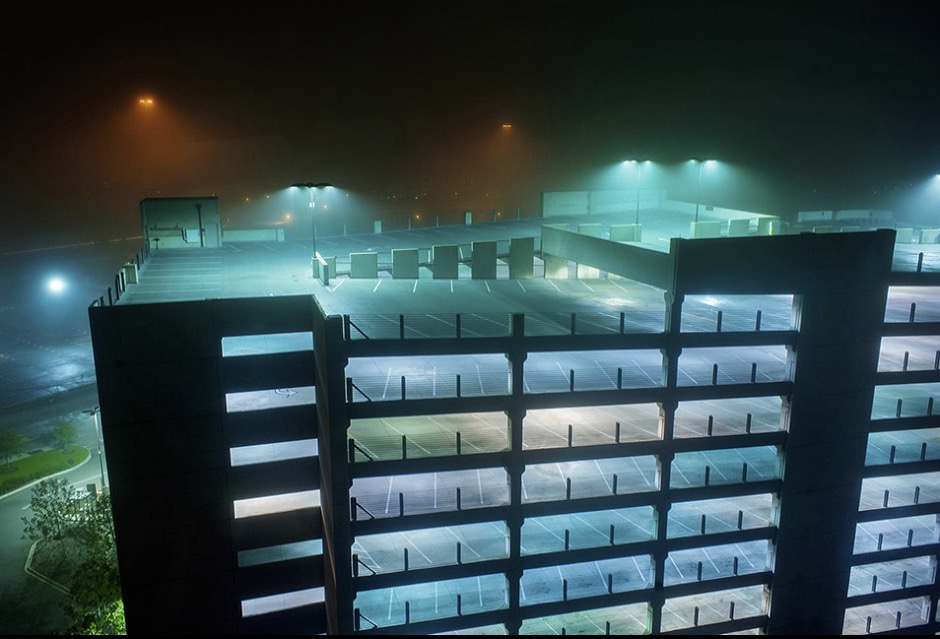The ROITD FMP exhibition took place this week, November 27th and 28th, at studio1.1 gallery on Redchurch Street in Shoreditch, London. The decision to actually hold an exhibition was only taken earlier this month, so pulling it together from conception to opening occurred in the space of 19 days.
studio1.1 London gallery
The progress of the work during this FMP period has been slow and hindered by outside factors, such that I initially felt that trying to hold an exhibition would prevent me from focusing enough time and energy on actually having enough work to submit by the December deadline. I was also discouraged by preliminary enquiries into potential exhibition spaces. Space hire seemed so prohibitively expensive and difficult to arrange that I figured I should concentrate on putting the work together for online presentation in the form of a project website, which I’d always envisaged as the main repository of the finished work.
I had wanted to present the images in triptychs, aiming to suggest quite open-ended narratives, and had decided that each triptych would be anchored by a portrait. After completing a couple of portrait shoots in the last six weeks or so, I saw this vision finally begin to take shape in a way that made an exhibition now seem possible.
Triptych
Additionally I was encouraged by a conversation with tutor Wendy McMurdo, an incredibly accomplished artist in her own right, who seemed to confirm that the work was heading in the right direction and encouraged me to keep pushing forward. She perfectly understood the internal conflict that I was having – ‘that’s the artistic process Justin’ – and this reassured me that I wasn’t going crazy and that I could possibly pull it off after all.
I also realised that without an exhibition I’d be missing a great opportunity to engage with the audience, to ‘reach out’ as I had always been aiming to do with the work. Reflecting on this aspect of the exhibition is something that I’ll discuss further in another CRJ post.
So, once decided upon, it was key to find a space to show the work. I was really fortunate that studio1.1 were able to accommodate me for two days at the end of November at a discounted rate that was within my budget. I had enough time to pull everything else together and also make more work, which at the time of deciding to have an exhibition was still necessary.
The initial plan was to show 12 to 15 images, but it quickly became clear that to do so would not allow me to articulate the idea well enough and would also not fill the space that the gallery afforded. The final exhibition consisted of 18 images presented with accompanying text panels taken from the project research, as well as some additional contextual information about the issue of urban solitude and loneliness.
Following on from my recent experience with the Shutter Hub Open, I explored the possibility of using newspaper for the printing and made enquiries with Newspaper Club about the papers and sizes available. The price to print on newspaper was certainly very attractive compared to my usual printer Digitalarte (approximately 10 times cheaper!) but once I was clear about which images I wanted to show and considering the subtlety of tonal variations and deep shadow in many of them, I ended up going for the tried and trusted, and much more expensive fine art method.
Once the space was secured I started promoting the exhibition via Instagram and Twitter and received a number of tentative responses suggesting that people were interested and planning to attend. The private view was held on the evening of Tuesday 27th and I’m really happy to say that it was well-attended.
Visitors at the Private View on 27th November 2018
The show ran for two days, 11am to 6pm on both days, with the private view from 7 to 9pm on the first day. I would have ideally held the exhibition for longer, but the gallery only had two free days available and it was difficult enough getting time off work for this period as it was. All in all it worked well, allowing those who expressed an interest in attending to do so. I was really gratified that people travelled from outside of London to see the exhibition and the feedback was generally really positive, which validated the expense and effort that had gone into putting the show on.
Overall, I’m really glad that I made the effort to arrange an exhibition. It was an incredibly valuable learning experience, both in practical and organisational terms, but also in terms of helping to better understand how to present work to attract and engage an audience, what considerations are important when planning what one hopes will be a successful show, as well as helping me to gain a better understanding of how different outputs can connect differently with audiences and thus how to more strategically present one’s work in order for it to have the maximum reach and impact.
I will write more about my reflections in this regard in a subsequent post.













